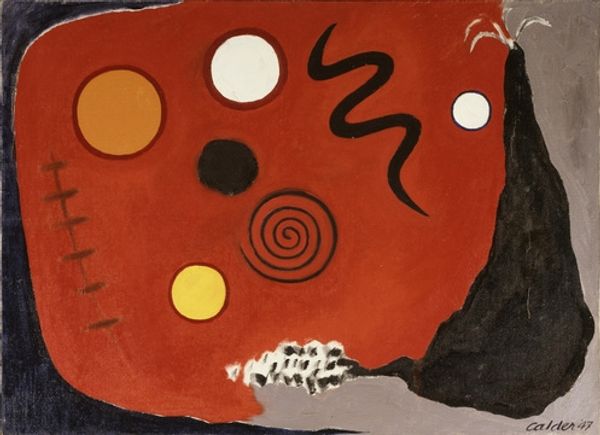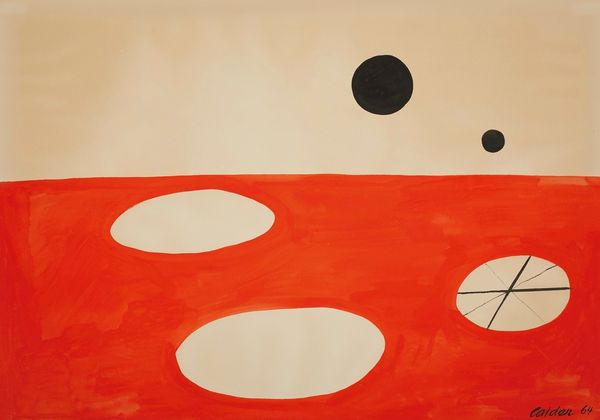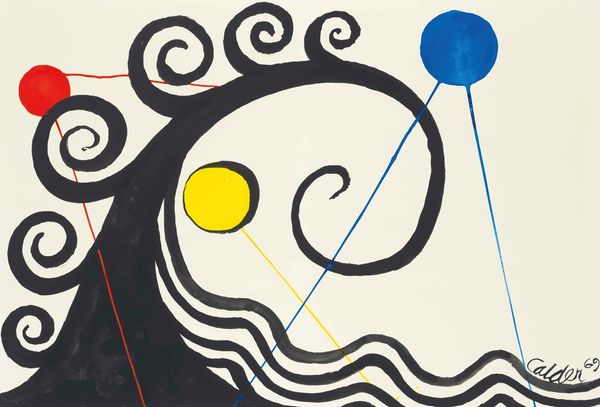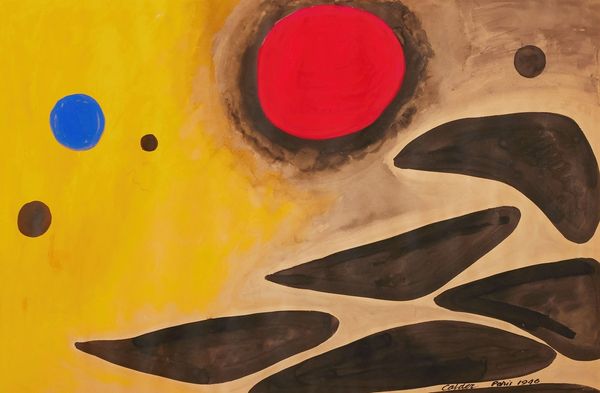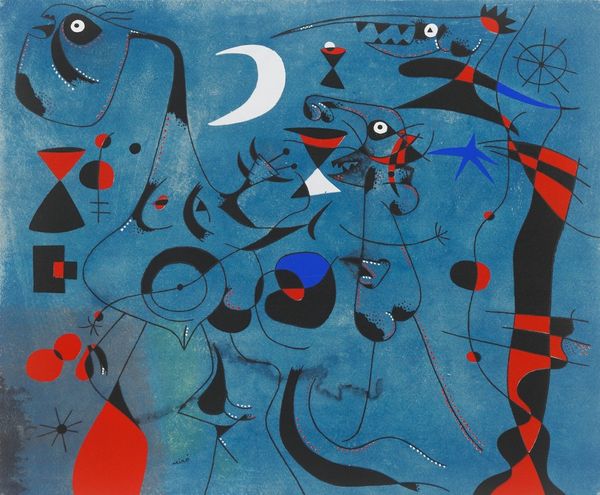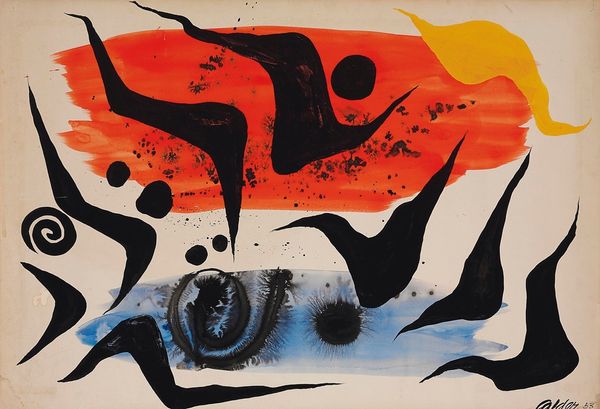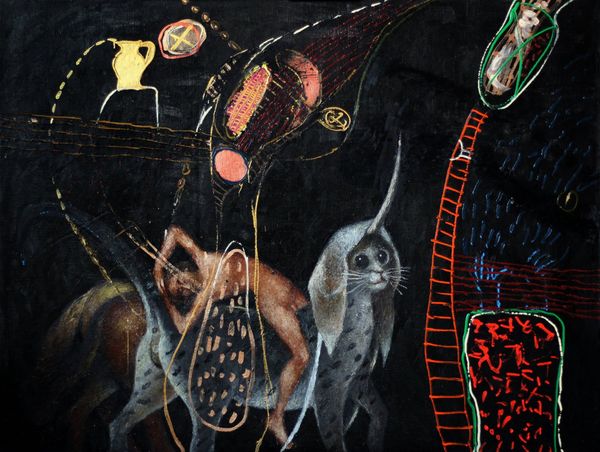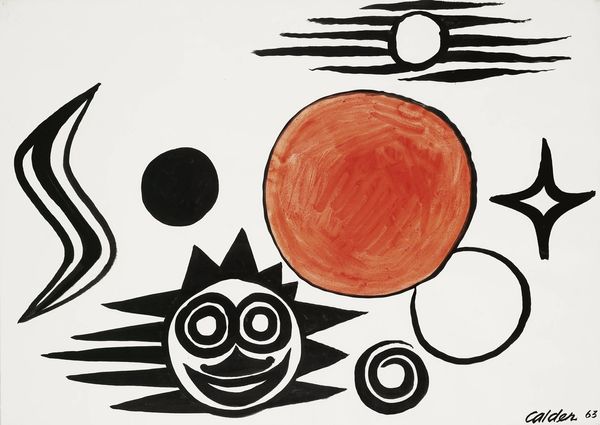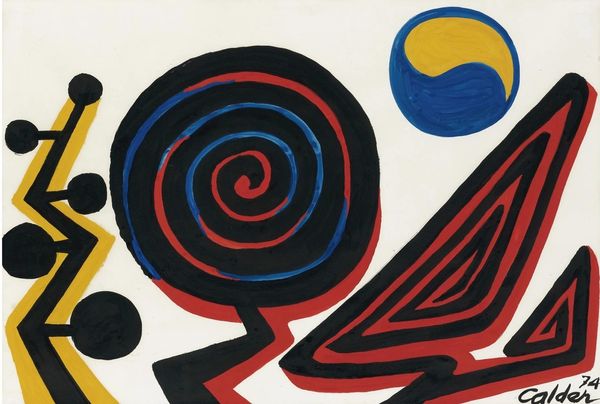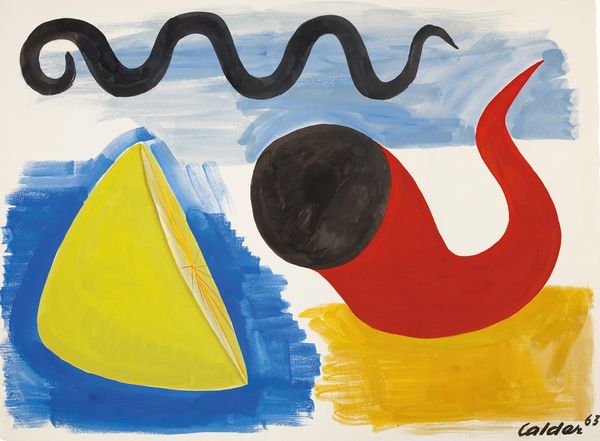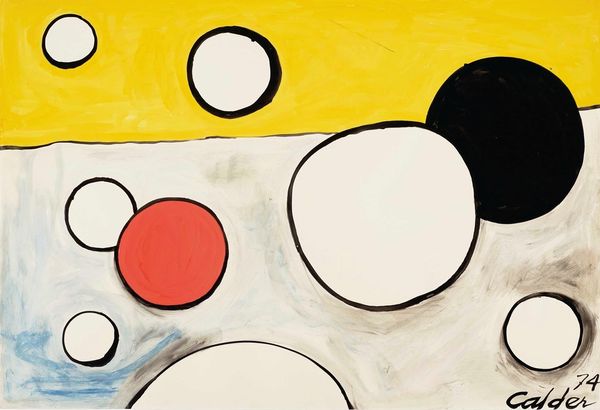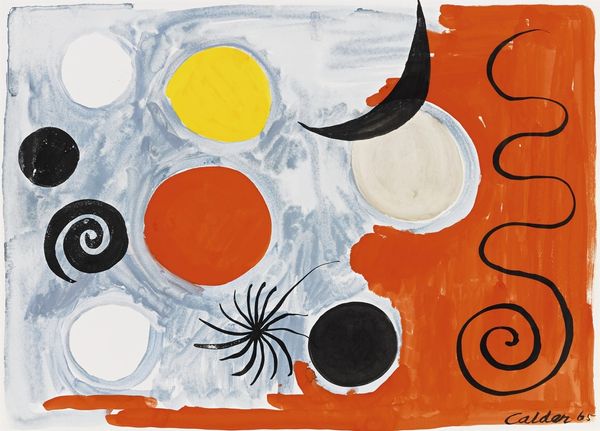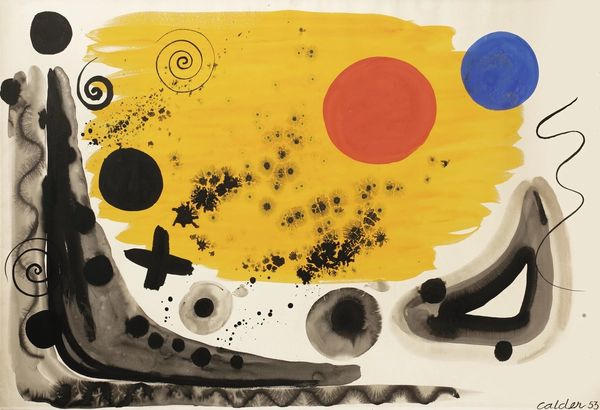
painting
#
abstract-expressionism
#
organic
#
abstract painting
#
painting
#
abstract
#
geometric
Copyright: Modern Artists: Artvee
Editor: So this is "Fond Rouge" by Alexander Calder, painted in 1949. It's dominated by this vivid red backdrop, with lots of playful, almost biomorphic shapes scattered across the canvas. What immediately strikes me is its energy, but I'm unsure where that energy is directed. What do you see in this piece? Curator: For me, "Fond Rouge" is a fascinating exploration of symbols and their latent power. Notice how Calder deploys circles, spirals, and biomorphic forms against that primal red—each shape resonates with ancient meanings. Consider the circle. Isn’t it a potent symbol for totality, for the self? What cultural memories do the floating yellow shapes evoke for you? Editor: I’m not entirely sure. Maybe a sun, or perhaps just free-floating forms? Are you suggesting Calder is drawing on specific, pre-existing meanings for these shapes? Curator: Perhaps. Or, he might be constructing a new visual language rooted in shared cultural understanding, accessing our collective unconscious. The dynamic interplay between the abstract shapes creates a push and pull—it’s a composition pregnant with unspoken narratives. Look how the sharp lines interact with soft textures! Where do you think this contrast might lead our gaze, psychologically speaking? Editor: It pulls my eye all over, actually. The hard and soft elements don’t seem to coexist peacefully… it makes the piece feel unsettled. Curator: Precisely. That tension invites deeper contemplation. By presenting familiar forms in a disjointed manner, Calder stimulates curiosity, leaving space for personal interpretations while referencing universally understood symbols. What do you make of the title itself, "Fond Rouge"—red background? Is it a description or another layer of symbolic communication? Editor: I’d originally dismissed the title as simply descriptive, but now I see how that boldness forces you to confront the deeper questions embedded in the symbolism. I find that interesting. Thanks! Curator: Indeed! And in doing so, perhaps we begin to see our reflection in Calder's vibrant, symbolic world, a mirror of the self.
Comments
No comments
Be the first to comment and join the conversation on the ultimate creative platform.
